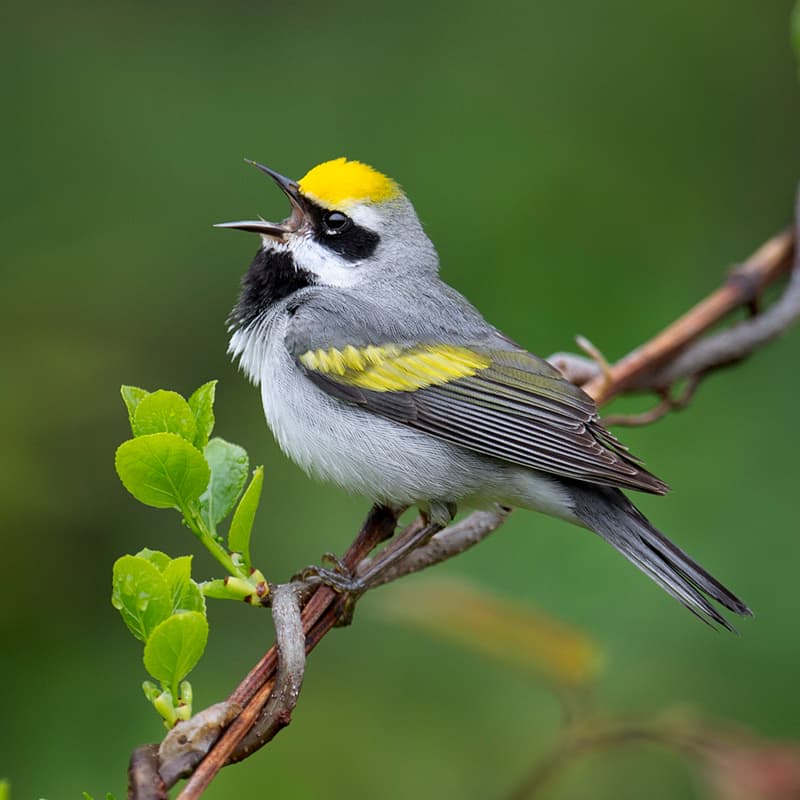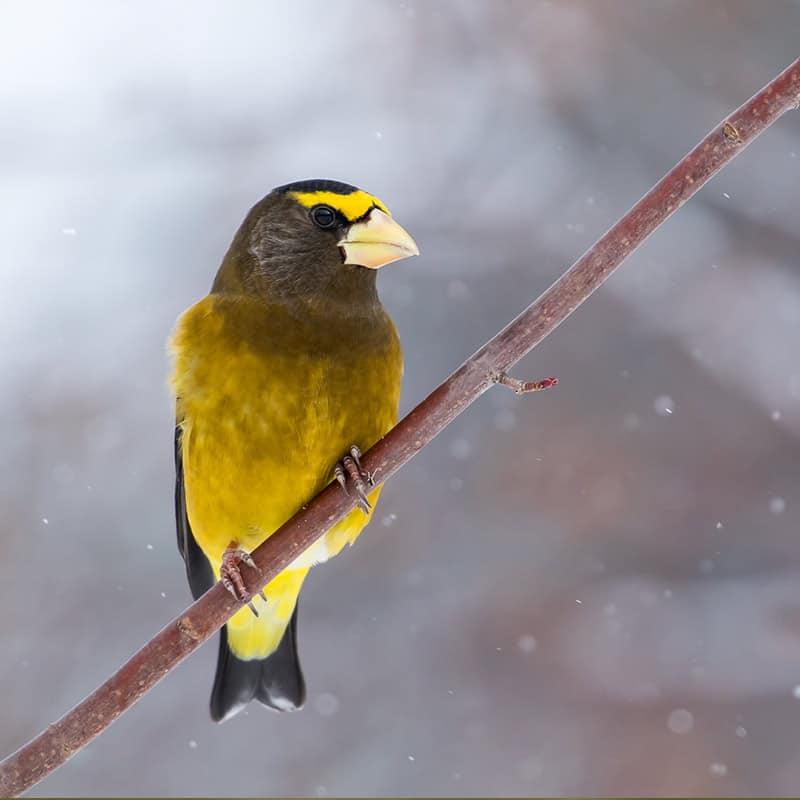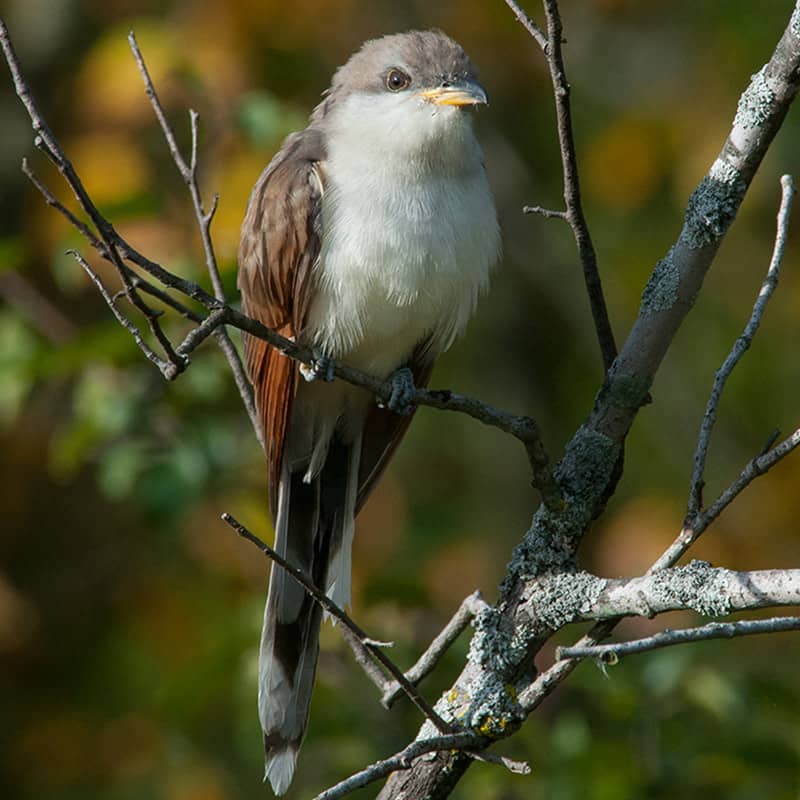Tipping Point Species
Bird Declines are Reaching a Tipping Point
As Road to Recovery develops an approach to reverse staggering continental avian declines, we started by asking “Which species do we need to work on first?” to identify specific limiting factors and causes of declines and to support the teams of scientists and practitioners dedicated to recovering their populations. Identifying causes of declines species-by-species can pinpoint different threats and limitations for species living in the same habitats throughout their annual cycles. Incorporating species-specific knowledge ensures broader ecosystem or habitat initiatives benefit multiple species without the most urgently declining species slipping through the cracks.
Scientists for the Road to Recovery initiative have identified 112 Tipping Point bird species that require immediate, focused scientific action to pinpoint causes of declines and develop strategies for recovery. R2R’s goal is to guide and support teams of practitioners (species working groups or recovery teams) in the U.S. and Canada dedicated to recovering bird populations. R2R integrates biological and social science to co-produce solutions that advance species towards sustainable recovery.
To assess Tipping Point species vulnerability and urgency, we relied on data already available in the Avian Conservation Assessment Database (ACAD)—a database maintained by Partners in Flight (PIF) and housed at Bird Conservancy of the Rockies. The most recent ACAD update (December 2023) incorporated data used by R2R to assess urgency, resulting in a single conservation assessment for both Watch List and Tipping Point species. All Tipping Point species exhibit high vulnerability to extinction and worrisome population declines as described below. We further identify three levels of alert—based on the severity of both long-term and short-term declines, or for species lacking monitoring data, a combination of expert-assigned vulnerability scores—that signify the degree of urgency in addressing these declines: Red-, Orange-, and Yellow-Alert species.
High Vulnerability to Extinction: Vulnerability in the ACAD is assessed by carefully scoring a series of independent factors (Population Size, Breeding and Non-breeding Distribution, Threats, and Trend) that are combined into a single Combined Conservation Score (CCS) that ranges from 4 to 20 (see the ACAD Handbook for a thorough description). Species that meet a threshold of CCS > 13 are considered to be highly vulnerable and are placed on the ACAD Watch List. Species with high scores across multiple factors (CCS > 16) are on the Red Watch List.
Population Decline: Based on the latest long-term population trend data for U.S./Canada species, we identified those Watch List species that are estimated to have lost 50% or more of their total adult breeding population since 1970. These species are assigned a Population Trend (PT) score = 5 in the ACAD. This analysis mirrors the survey data used to assess population change for 529 species in Rosenberg et al. (2019), updated with data through 2021 and including a complete re-analysis of shorebird trend data by Paul Smith (Smith et al. 2023).
Urgency: To assess urgency, we examined population trajectories for each species based on the most recent analysis of BBS and other survey data (updated through 2021). By comparing long-term trends (back to 1970 for most species; to 1980 for shorebirds) with the most recent population trajectories (defining “recent” as a 3-generation time frame), we identified species in three urgency categories:
Red Alert: Species that qualify for ACAD Red Watch List based on multiple high vulnerability scores, usually including perilously low population size and steeply declining or unknown population trend.
Orange Alert: Corresponds with ACAD Orange Watch List; species with very large long-term population loss (> 75%); OR species with large long-term loss (>50%) and with continued or accelerated recent declines resulting in a loss ≥ 30% over the most recent 3 generations or a half-life < 30 years. Also includes a few conservation-reliant species that are beginning to recover but still require urgent attention.
Yellow Alert: Corresponds with a subset of ACAD Yellow Watch List species that have experienced large long-term population loss ( ≥ 50%), but now show relatively stable or even increasing populations over the most recent 3-generation period. These species may be responding to current conservation efforts but still require recovery to healthier population levels.
Poorly Monitored Species: For many species included in the ACAD Watch List based on a combination of small global population or distribution and high threats, we lack long-term monitoring data to compare long-term and recent trends, yet we can assess their urgency based on ACAD scores. For these poorly monitored species, we use a combination of expert-assigned scores to assign each to either Red-, Orange-, or Yellow-Alert categories; they are denoted with an asterisk in the list below.
Summary of Urgency Alert Levels and Definitions
| Alert | ACAD Watch List | Species with or without long-term trend data |
| Red | Red Watch List | Combined Conservation Score (CCS) > 16; OR CCS = 16 and PT + TB/TN = 9 or 10 |
| Orange | Orange Watch List | Not Red Watch List; Long-term loss ≥ 75%; OR Long-term loss ≥ 50% and Short-term loss ≥ 30% or Half-Life ≤ 30 years; OR CCS = 16 and PS = 5 |
| Yellow | Yellow Watch List |
Not Red or Orange Watch List; Long-term loss ≥ 50% (PT = 5) BUT short-term loss < 30% and Half-Life > 30 years; OR any other factor score = 5 (extremely high vulnerability. |
Tipping Point Species List
Scientists for the Road to Recovery initiative have identified 112 Tipping Point species in need of focused and immediate scientific action to pinpoint causes of declines and to support practitioners dedicated to recovering their populations. Note that all of these species are also Watch List species, and some are already listed as Endangered, Threatened, or Special Concern under federal legislation in the U.S. (ESA) or Canada (SARA). An asterisk denotes Poorly Monitored species, for which urgency is assessed through expert-assigned vulnerability scores.
Red-Alert Species (42)
Mottled Duck
Steller’s Eider* (ESA)
Spectacled Eider* (ESA)
Gunnison Sage-Grouse* (ESA)
Greater Sage-Grouse (SARA)
Greater Prairie-Chicken (SARA)
Lesser Prairie-Chicken* (ESA)
Allen’s Hummingbird
Ridgway’s Rail* (ESA)
Black Rail*
Wilson’s Plover
Mountain Plover (SARA)
Bristle-thighed Curlew*
Hudsonian Godwit
Kittlitz’s Murrelet*
Scripp’s Murrelet*
Craveri’s Murrelet*
Guadalupe Murrelet*
Yellow-billed Loon
Townsend’s Storm-Petrel*
Ashy Storm-Petrel*
Band-rumped Storm-Petrel*
Bermuda Petrel* (ESA)
Black-capped Petrel*
Hawaiian Petrel* (ESA)
Fea’s Petrel*
Pink-footed Shearwater* (SARA)
Red-faced Cormorant
Florida Scrub-Jay* (ESA)
Yellow-billed Magpie
Bendire’s Thrasher
LeConte’s Thrasher
Bicknell’s Thrush* (SARA)
Brown-capped Rosy-Finch*
Cassia Crossbill*
Chestnut-collared Longspur (SARA)
Thick-billed Longspur (SARA)
Bachman’s Sparrow
Saltmarsh Sparrow*
Baird’s Sparrow (SARA)
Tricolored Blackbird*
Golden-cheeked Warbler*
Orange-Alert Species (37)
King Eider
Long-tailed Duck
Black Swift (SARA)
Chimney Swift (SARA)
Rufous Hummingbird
King Rail (SARA)
Whooping Crane*
Black-bellied Plover
American Golden-Plover
Piping Plover (ESA, SARA)
Whimbrel
Ruddy Turnstone
Red Knot (ESA, SARA)
Stilt Sandpiper
Sanderling
Buff-breasted Sandpiper (SARA)
Pectoral Sandpiper
Semipalmated Sandpiper
Short-billed Dowitcher
Long-billed Dowitcher
Lesser Yellowlegs
Greater Yellowlegs
Dovekie
Short-billed Gull
Western Gull
Glaucous Gull
Great Black-backed Gull
Least Tern (ESA)
Pelagic Cormorant
California Condor
LeConte’s Sparrow
Sprague’s Pipit (SARA)
Evening Grosbeak (SARA)
Eastern Towhee
Bobolink (SARA)
Kirtland’s Warbler
Pyrrhuloxia
Yellow-Alert Species (33)
Northern Pintail
Black Scoter
Marbled Murrelet (ESA, SARA)
Horned Grebe
Eastern Whip-poor-will (SARA)
Yellow Rail* (SARA)
American Oystercatcher*
Snowy Plover*
Bar-tailed Godwit*
Rock Sandpiper
Wandering Tattler*
Ivory Gull* (SARA)
Short-tailed Albatross*
Manx Shearwater*
Audubon’s Shearwater*
Reddish Egret*
Spotted Owl* (ESA, SARA)
Lewis’s Woodpecker
Red-cockaded Woodpecker
Olive-sided Flycatcher (SARA)
Henslow’s Sparrow (SARA)
Pinyon Jay
Wood Thrush (SARA)
Black Rosy-Finch*
Black-chinned Sparrow
Field Sparrow
Harris’s Sparrow (SARA)
Sagebrush Sparrow
Chihuahuan Meadowlark
Golden-winged Warbler (SARA)
Cerulean Warbler (SARA)
Prairie Warbler
Grace’s Warbler
Pilot Species Working Groups
With generous support from the Knobloch Family Foundation, Road to Recovery is able to begin supporting the recovery of Tipping Point species with four pilot projects. The purpose of these projects is to provide a proof of concept for advancing both biological and social science targeted at identifying and addressing causes of species declines.
References
Rosenberg, K. V., A. M. Dokter, P. J. Blancher, J. R. Sauer, A. C. Smith, A. O. Panjabi, J. C. Stanton, P. A. Smith, L. Helft, M. Parr, P. P. Marra. 2019. Decline of the North American avifauna. Science 366:120-124. https://doi.org/10.1126/science.aaw1313
Smith, P. A., A. C. Smith, B. Andres, C. M. Francis, B. Harrington, C. Friis, R. I. G. Morrison, J. Paquet, B. Winn, S. Brown. 2023. Accelerating declines of North America’s shorebirds signal the need for urgent conservation action. Ornithological Applications, Volume 125, Issue 2, 1 May 2023, duad003, https://doi.org/10.1093/ornithapp/duad003





